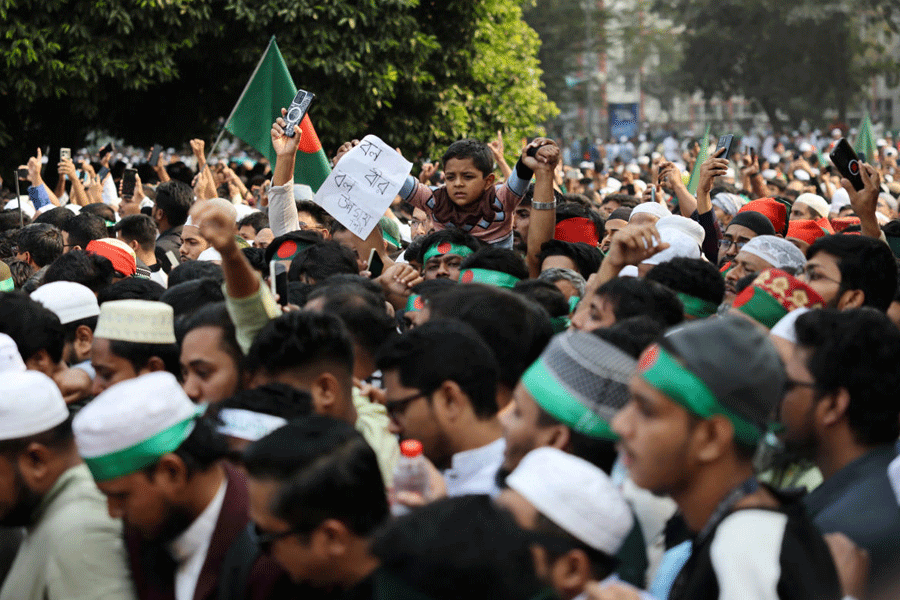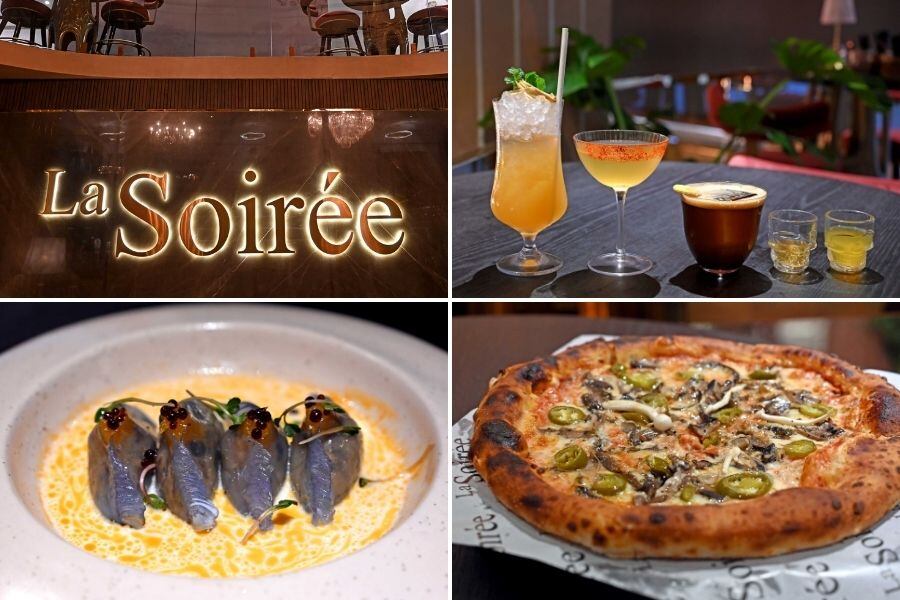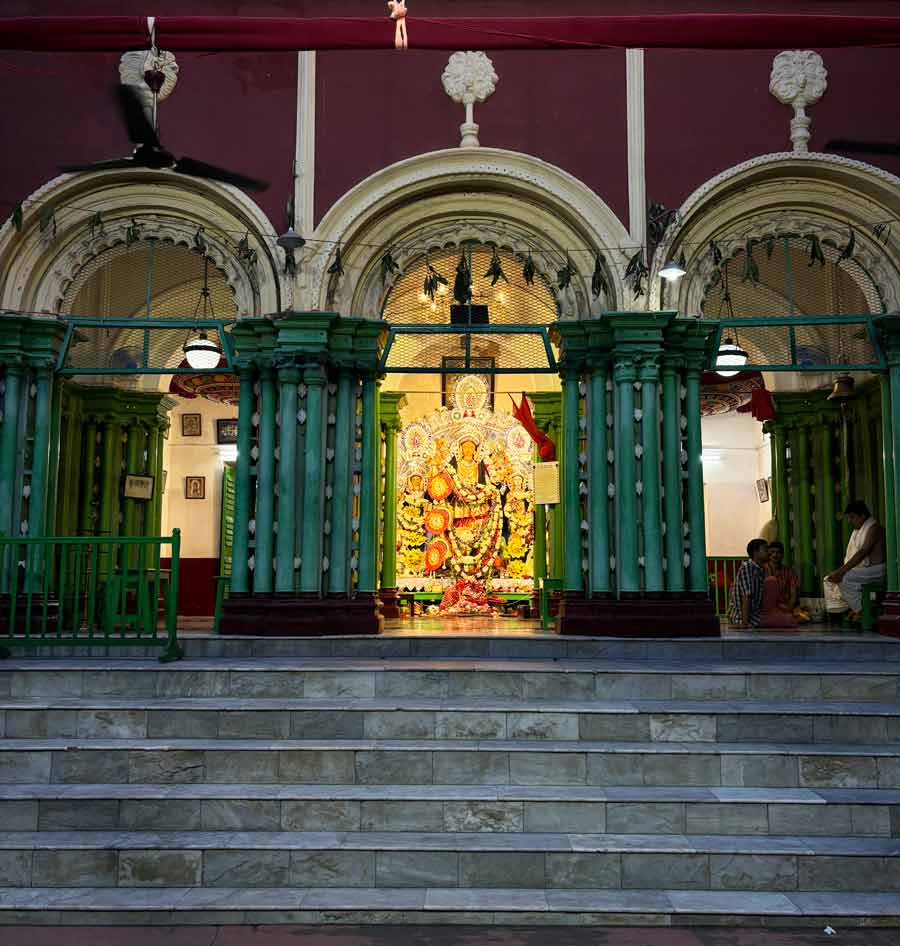
A legacy that dates back to nearly two centuries, the Bose family of Shibpur, Howrah has been organising one of the most iconic Durga Pujas in the region. The red and green painted courtyard creates a stunning backdrop for photoshoots, especially with Maa Durga at the heart of the celebrations
Photos: Sourodeep Sirkar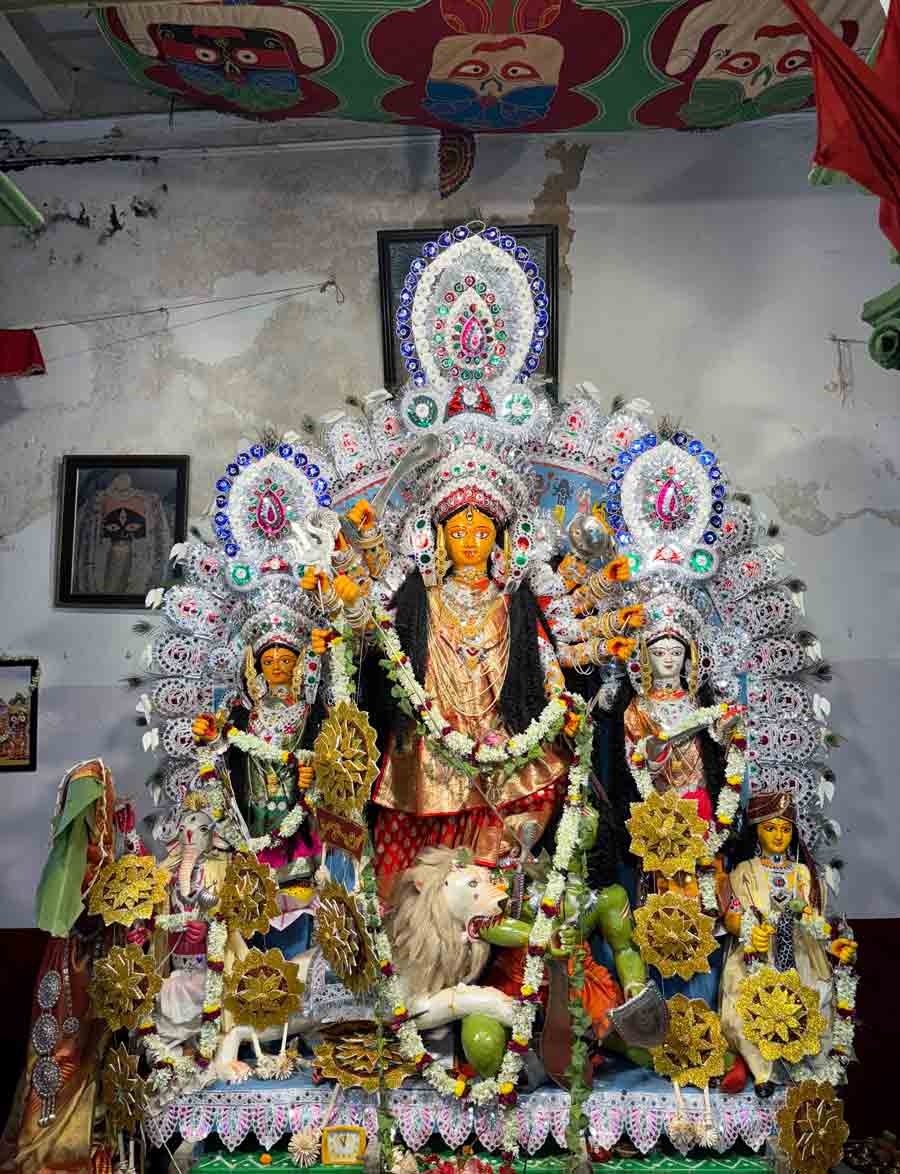
The idol, crafted under a single ‘chalchitra’, stands out for its unique features including the majestic white lion that isn’t a common sight. An enduring part of this ‘bonedi bari’ Puja’s legacy is that the Goddess is crafted on the same frame every year, using the same straw structure since before the Revolt of 1857. The same family of craftsmen has been bringing this 12-foot idol to life, continuing a tradition passed down through generations
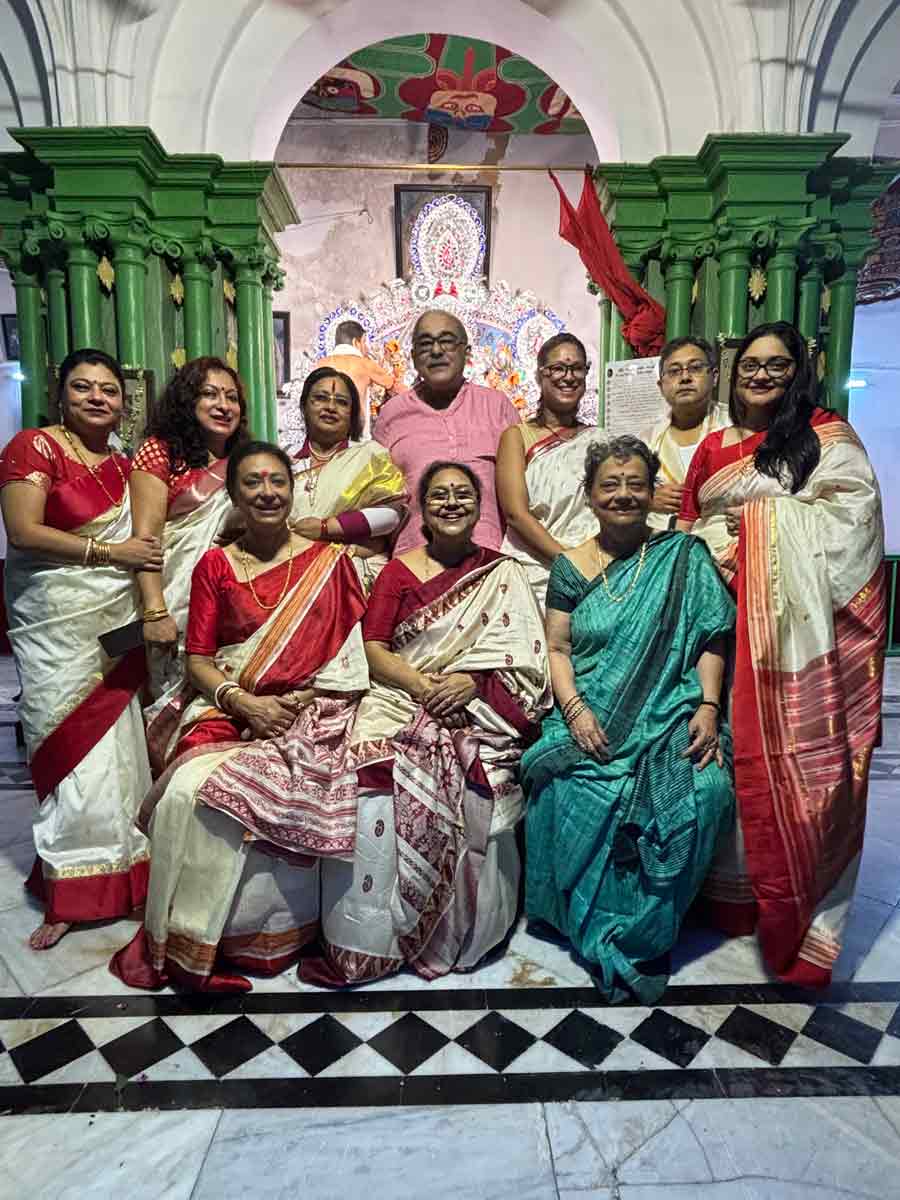
Two generations of the Bose family are pictured here, showcasing some of the individuals without whose contributions the Pujo would not come to life. While each member works in a different field and family gatherings are rare due to conflicting schedules, Durga Puja holds a special place in every family member’s heart, strengthening familial bonds year after year under Maa Durga’s watchful eyes
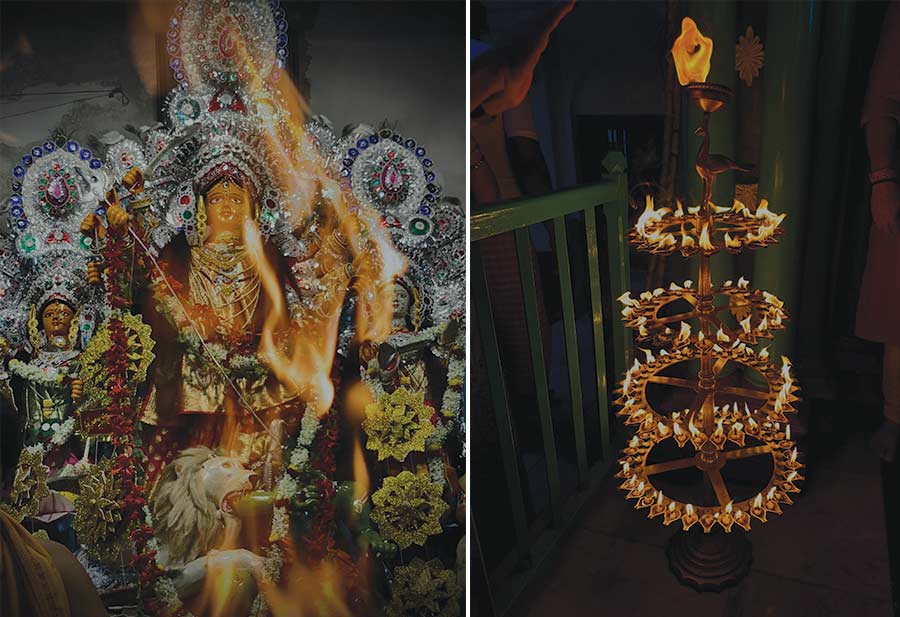
From the Ashtami’s ‘hom’ (yajna) to the 108 pradips lit during Sandhi Puja, fire plays a central role in the rituals. Offering prayers through the sacred flames, Maa Durga’s eyes seem to glow brighter at the sight of the fire. Despite the heat and humidity, the family gathers around the flames, fully immersed in the purohit’s chanting of mantras. After the ‘hom’, the ashes are used as ‘teeka’, and the scent of ghee melting over the flames from the hands of the individual performing the ‘Sankalpa’ is a cherished tradition
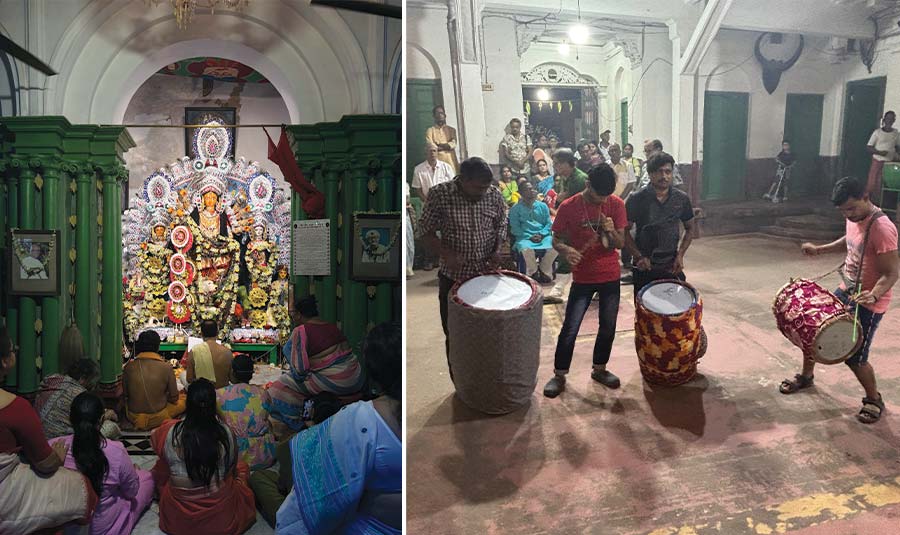
While the ‘thakur dalan’ often becomes a lively spot for ‘adda’ and photo sessions when the purohit isn’t chanting prayers, the ‘pujo path’ is a moment of reverence when everyone sits quietly, observing Maa Durga’s prayers, and seeking blessings for health and happiness. The dhaakis too have been a crucial part of the ‘pujo’ since its inception, with the same family playing the melodious beats through generations.
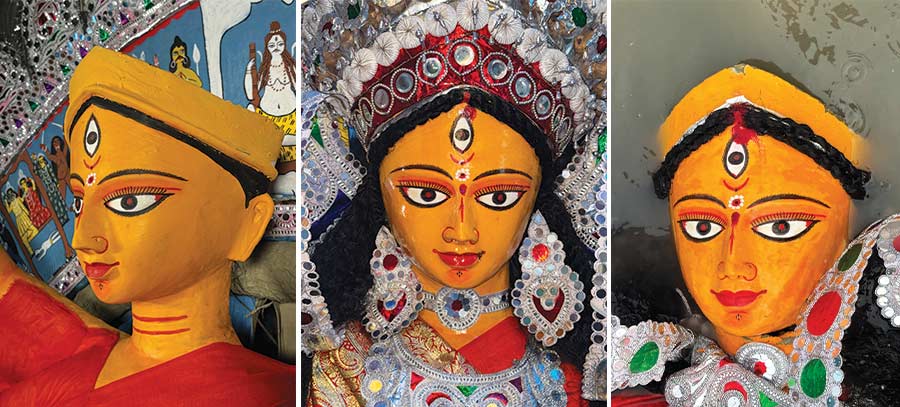
From the painting of Maa Durga’s eyes on Mahalaya to her being dressed up in gold ornaments on Sasthi morning right through the Puja, if observed well, one can see changes on the Goddess’s face as the idol comes to life for four days before the saddest face is seen on Dashami, when she is submerged in water on her way home to Kailash
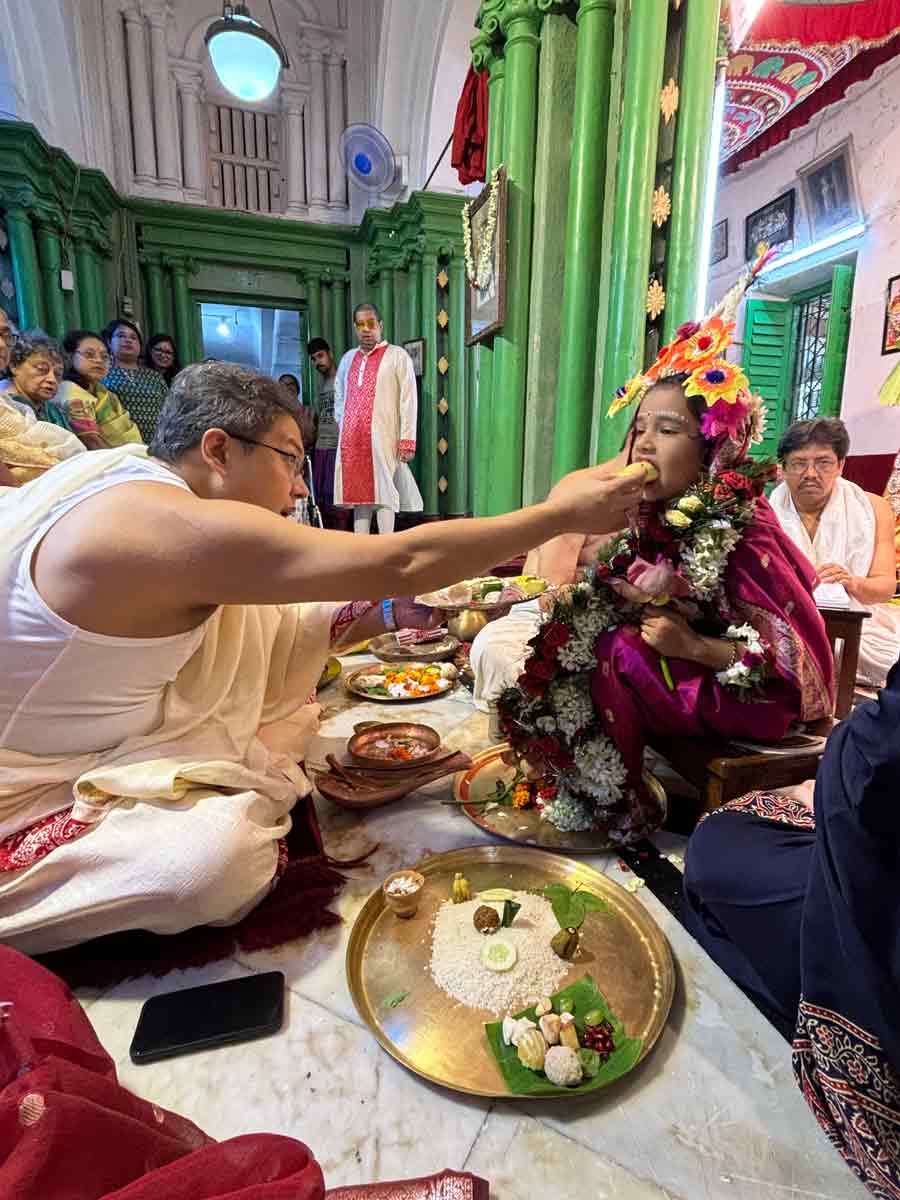
Kumari Puja is another tradition the Bose family continues to uphold, where the Goddess is worshipped in the form of a young girl. Sourya Sadhan Bose, the eldest son of his generation, performs the ‘Sankalpa’ throughout the Pujo, following a strictly vegetarian diet from Mahalaya until Navami. On Navami, Sourya seeks the blessings of the Kumari on behalf of the entire family
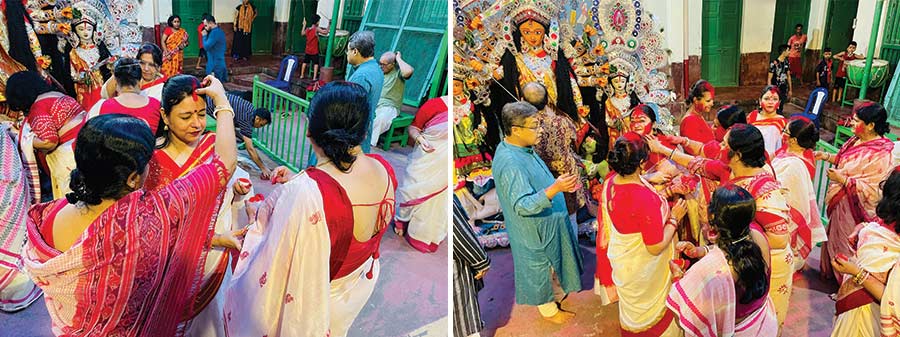
Sindoor Khela, a tradition where married women first apply ‘sindoor’ on Maa Durga, is followed by them playfully applying vermilion on each other. It begins in a restrained manner, with the first touch of sindoor placed gently on the forehead, as seen in the left picture. But it soon turns into a joyful celebration, where the goal is to cover every bit of skin with the bright vermilion powder, leaving no one untouched
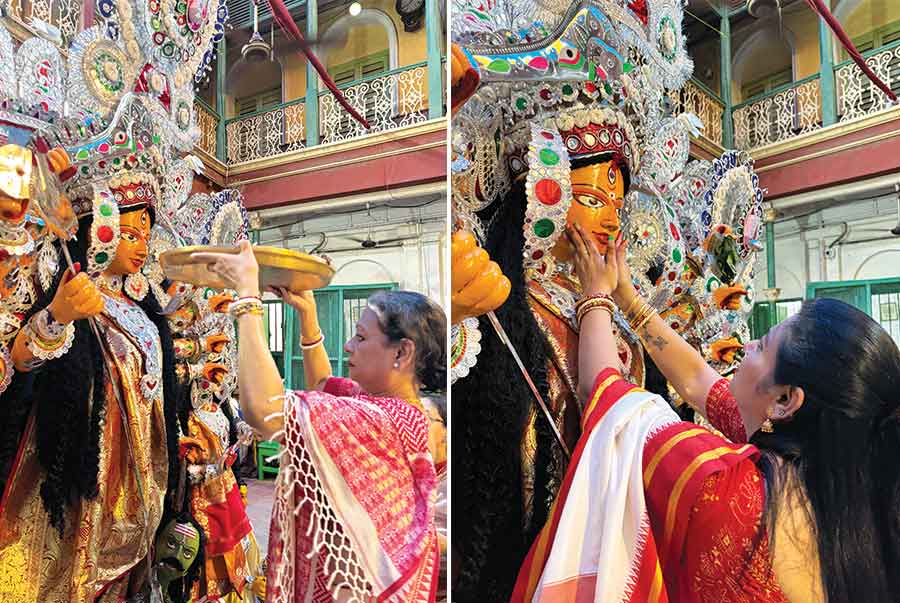
The 12-foot idol is gently carried down from the ‘dalan’ to the courtyard, where the married women of the family, dressed in ‘laal-paar shada saris’, move in a circle around the idol to begin the boron ceremony. Maa Durga, along with her children, even the lion and Asur, are given bits of ‘naarus’ to send them off on a sweet note. Though sadness fills the air as the family prepares to wait another year for Maa’s return, the rituals are deeply symbolic. Betel leaves are placed in all ten hands of the Goddess and her cheeks are lovingly touched, while the family affectionately prays and requests her to return soon
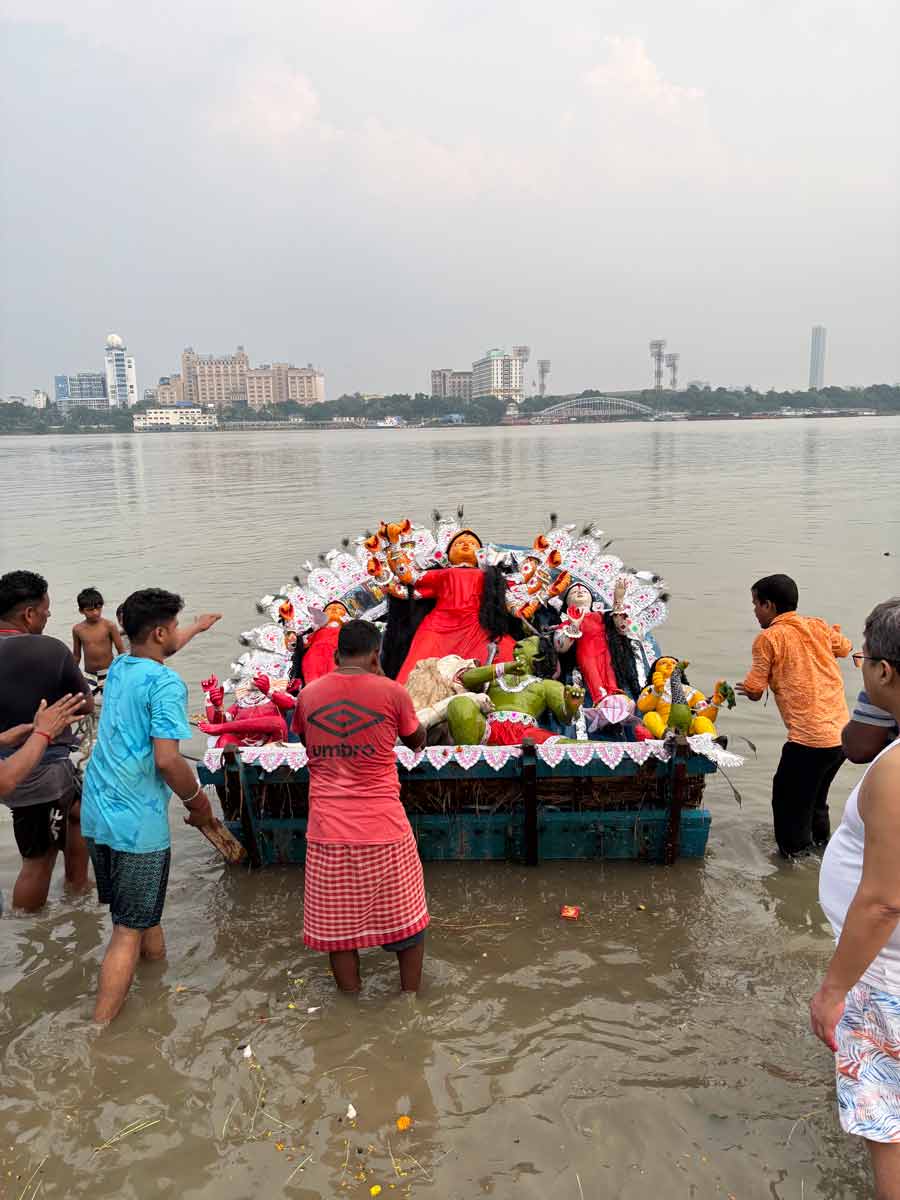
The idol is carried through the streets of Shibpur, Howrah, to Ramkrishnapur Ghat, where she is immersed in the holy Ganges. A convoy of people, on foot and in cars, follows her to the ghat, with the ‘dhaakis’ leading the way, rhythmically beating their drums. Once the idol is submerged, family members step into the water to remove the layer of paint and clay, leaving only the straw structure behind. This structure is then brought back home, with the anticipation of recreating the entire celebration all over again the following year
